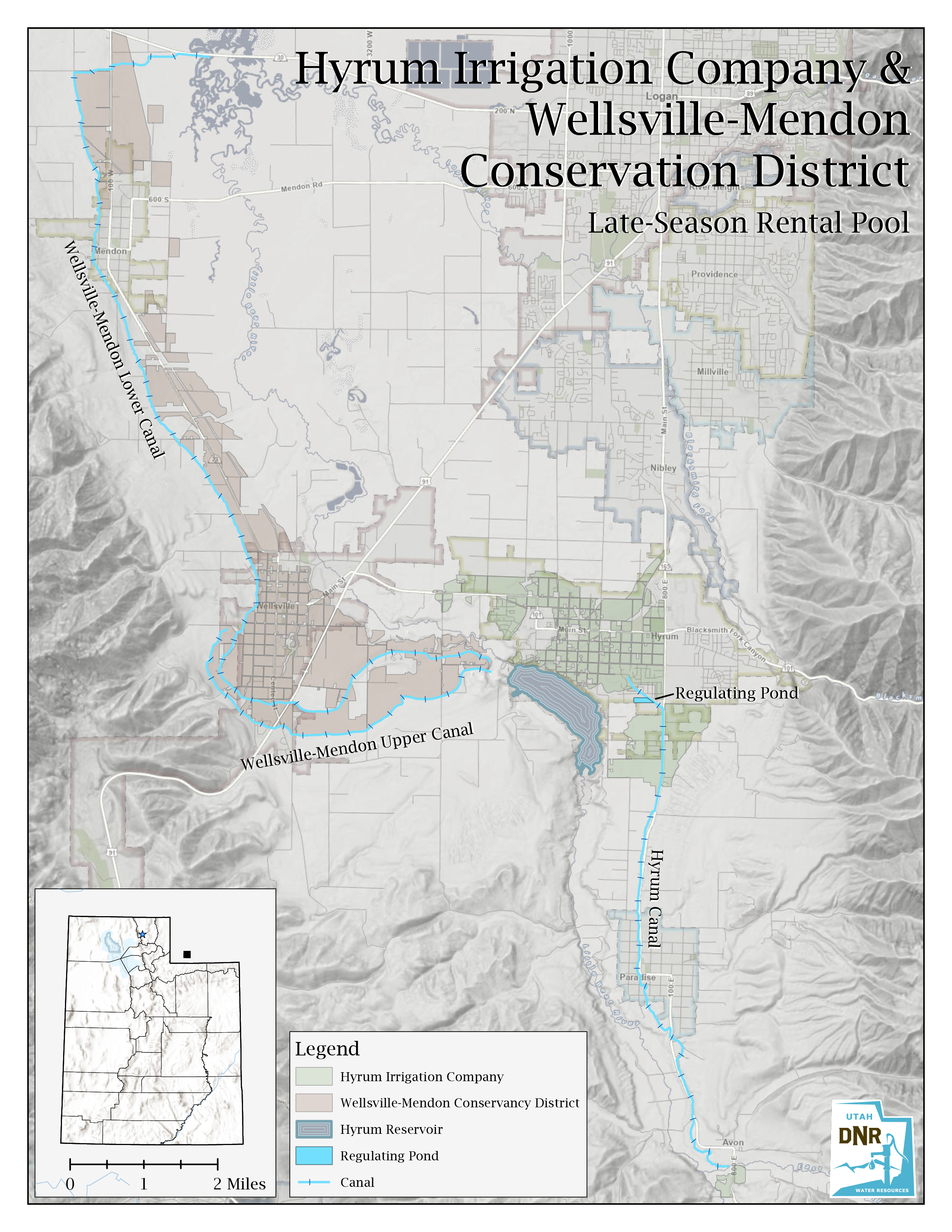Need
Match irrigation companies and irrigators to resolve valley-wide late season supply and demand issues.
Background
Cache Valley is in northern Utah along the eastern portion of Cache County. The Cache Valley Pilot Project centered on the southern Cache Valley, near the cities of Paradise, Hyrum, Wellsville, and Mendon. This extensively irrigated area is witnessing rapid municipal growth. The Little Bear River and its tributaries are the principal drainages for the area’s approximately 185,000 acres. Hyrum Reservoir impounds the waters. Monthly flows of the Little Bear River are typical for a snowmelt-driven river system, experiencing spring runoff peaks and monsoon rainstorms in late summer. Annual streamflow volumes in the Little Bear River show a long-term average (1992-2022) of 61,000 acre-feet per year.
Initially, the Cache Water Conservancy District volunteered Cache Valley as a pilot area to explore whether water banking could address local issues. In particular, there was interest in exploring whether irrigation companies in Southeast Cache Valley could be knitted together to facilitate deliveries across a broader service area. However, it became clear that there was a mismatch between supply and demand, with everyone wanting water simultaneously. A water bank would not be the best fit without an available supply to meet demand.
Progress
Two interested entities, Hyrum Irrigation Company and the Wellsville-Mendon Conservation District, determined that they had the correct configuration of supply and demand to create a late-season Rental Pool in Hyrum Reservoir. The discussion resulted in the Hyrum Irrigation Company and the Wellsville-Mendon Conservation District entering a two-party water lease agreement. The terms of the agreement generally set an annual process for Hyrum Irrigation Company to alert Wellsville-Mendon of the price and availability of surplus late-season water for lease. No Change Application was required since the water was delivered to the same Place-of-Use and for the same Nature-of-Use. Accordingly, the administrative burden of the lease pool was relatively small.
Status
While the Cache Valley pilot area did not result in creating a Water Bank, it was a successful pilot project producing valuable lessons and informing broader water marketing strategies. The project also resulted in a working water leasing contract, providing a template for other parties looking to arrange a similar water transaction. Due to dry conditions, water was not leased in 2022; with record-setting snowfall, water is expected to run in the summer of 2023. The local stakeholders were happy with the results of the effort, and the Cache Valley now has an additional tool for meeting local water demand.
Participating Parties
- Hyrum Irrigation Company
- Wellsville Mendon Conservation District
More information on Utah water marketing can be found from our Water Marketing main page.
If you have questions or need further information, please email WaterMarketing@utah.gov.

